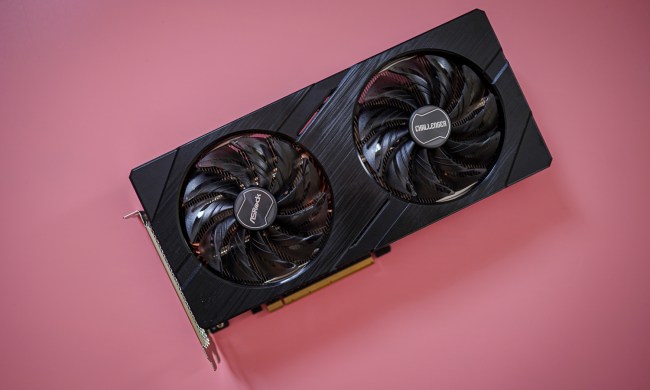An upcoming Intel Arc GPU just made an appearance, and it’s one we haven’t seen much of before — the Arc A580.
Meant to bridge the gap between the Arc A380 and the A750, the graphics card has received little coverage thus far. Now, we know more about it thanks to an Ashes of the Singularity database entry. Can it rival the entry-level Nvidia GeForce RTX 3050?

Intel’s upcoming Arc A580 is expected to feature 16 Xe-Cores, 8GB of GDDR6 memory across a 128-bit bus, and an estimated 256GB/s of bandwidth. It’s an entry-level offering that many compare to Nvidia’s RTX 3050, but today’s benchmark actually puts it in direct competition with an even better GPU.
The Intel Arc A580 was spotted by VideoCardz in an Ashes of the Singularity benchmark. It was paired with an engineering sample of an Intel processor that had 16 cores. This could be an Intel Raptor Lake sample, but there is no way to really tell. The benchmark itself is not very informative in terms of specs or system configuration, but it does tell us how the Arc A580 fared when it comes to frames per second (fps).
Spotted running at the minimum 1080p preset, the Arc A580 scored 9,300 points and an average of 95 fps. The graphics card was tested using the Vulkan API as opposed to DirectX 12. This doesn’t matter, because Intel Arc favors both DX 12 and Vulkan over older APIs like DirectX 11. For that reason, this was the dream scenario for the GPU, and it did very well. This fps range puts the GPU on par with the Nvidia GeForce RTX 3060 — but we shouldn’t get too excited just yet.
While the RTX 3060 has the same score in the same Ashes of the Singularity test, it’s important to note that this test is not a very accurate depiction of the card’s performance. In addition, as mentioned above, Intel Arc does well with newer APIs, but that score would likely drop if DX11 was in use. On the other hand, seeing as the RTX 3060 is a lot faster than the RTX 3050, this spells good news for the A580.

If the Arc A580 can match up against the RTX 3060 in this test, it should be able to keep up with the RTX 3050 in a general sense. Outside of gaming performance, we know that Intel Arc will provide access to AV1 encoding, Intel XeSS, and ray tracing, so if the card is priced correctly, it could be a good deal. If Intel keeps the pricing low, around the $200 to $230 range, it will have an easier time drawing attention to this GPU.
For the time being, the only GPU with any global availability is the budget Arc A380. Priced at just $140, it proved that Intel means business when it claims it wants to be competitive in price. Let’s hope that trend holds up for the rest of the lineup when it’s finally released.




